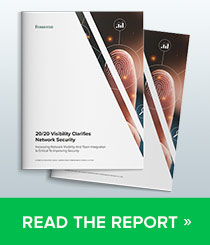For organizations embarking on the AWS cloud journey, the promise is compelling: greater agility, scalability and innovation. However, the path to cloud success is often complicated by networking challenges that can slow migration timelines, create security vulnerabilities and increase operational costs.
The Hidden Network Roadblocks to Cloud Success
When planning your AWS migration strategy, application workloads typically receive the most attention. Yet it’s often the critical network services—DNS, DHCP and IP address management (collectively known as DDI)—that can become bottlenecks.
Consider these common scenarios:
- Your development team needs new IP address blocks for AWS environments but must wait days for the networking team to manually assign them—leading to delays in application deployment.
- Inconsistencies in both IP address policies and network configuration between on-premises DNS and Amazon Route 53 cause application disruptions during migration.
- Security teams lack unified visibility across hybrid environments, creating compliance gaps.
According to Accenture, 78 percent of companies now operate hybrid cloud strategies, making these challenges increasingly common. The good news? These network roadblocks are entirely avoidable with the right approach.
Bridging the Gap Between On-Premises and AWS
Successful cloud migrations require extending your existing network infrastructure to AWS in a way that maintains security, visibility and operational efficiency. The challenge lies in creating a seamless bridge between traditional networking teams and cloud-focused teams.
“A big part of working to become a full SaaS/cloud business includes getting away from managing data centers,” explains Glenn Kerr, networking engineering team manager at MYOB, a leading financial services software company. “In moving our operations to the cloud, however, we needed to rethink the way we were managing core network operations.”
This is where enterprise-grade DDI solutions, like Infoblox Universal DDI™ Product Suite, make a critical difference in your AWS migration journey.
How Infoblox Accelerates Your AWS Migration
Infoblox provides three key benefits that, together, dramatically accelerate your AWS migration:
1. Eliminating NetOps/CloudOps Friction
One of the most significant migration delays comes from the handoffs between networking and cloud teams. When these teams use different tools and processes, simple tasks, like IP address allocation and connecting on-premises DNS to cloud-native DNS systems, become bottlenecks.
Infoblox’s native integration with Amazon Route 53 creates a seamless connection between your on-premises DNS infrastructure and AWS cloud environments. This integration eliminates the need to manually manage separate DNS systems, allowing teams to maintain their existing workflows while extending DNS management capabilities to the cloud. Network administrators can continue using their familiar Infoblox interface while cloud teams benefit from the native AWS experience.
Allocating IP addresses to cloud resources also becomes simpler.
Australian financial software leader MYOB experienced this firsthand during their AWS migration. “Before Infoblox DDI, the IPAM process required us to reach out and communicate with the networks team—which may or may not have been able to accommodate us right away,” explains Joe Devereux, a senior systems engineer at MYOB. “But now I can spin stuff up on my own in minutes and it’s invisible to me. It just works. I get a new IP block assigned for my account and I’m up and running straight away.”
2. Accelerating Application Landing Zone Creation
Creating application landing zones in AWS—with all the necessary network configurations across multiple regions and availability zones—is typically a complex, time-consuming process.
A large financial services firm found setting up application landing zones in two cloud regions with three availability zones for resilience, supporting three application tiers (web, app, database) across development, quality assurance and production environments initially took six to eight weeks. After implementing Infoblox’s Terraform integration, they cut this time down to just 15 minutes.
This dramatic time reduction doesn’t just improve IT efficiency—it fundamentally changes how quickly your business can execute its cloud strategy.
3. Enhancing Security Across Hybrid Environments
Cloud migrations can create security gaps when visibility becomes fragmented across environments. DNS-based security becomes especially critical as 80-90 percent of cyberattacks leverage the DNS.
With Infoblox’s enterprise-grade Universal DDI platform and protective DNS capabilities, security teams gain complete visibility across on-premises and AWS environments, enabling consistent policy enforcement and preemptive blocking of communications to malware, command-and-control (C2) sites and data exfiltration within DNS-based queries. A Forrester study found this approach can result in a 26.5 percent decrease in data breaches, audits and associated fees.
Streamlining Your AWS Procurement
Beyond the technical benefits, organizations can also streamline procurement through the AWS Marketplace. This approach allows you to:
- Utilize existing AWS Enterprise Discount Program (EDP) investments
- Eliminate additional budget allocation processes
- Simplify licensing and management
Getting Started with Your Migration Acceleration
If you’re planning or currently executing an AWS migration strategy, consider these next steps:
- Assess your current DDI infrastructure: Evaluate how your existing DNS, DHCP and IP address management will extend to AWS.
- Identify automation opportunities: Look for manual processes that could be automated through infrastructure-as-code offerings, like Terraform.
- Consider security implications: Ensure your security posture extends consistently to AWS.
- Explore procurement options: Investigate how AWS Marketplace can simplify acquisition.
With a client portfolio encompassing three-quarters of Fortune 500 organizations, Infoblox delivers proven enterprise-grade solutions that resonate across industries—from stringent regulatory environments, like financial services and healthcare, to the complex security requirements of public sector institutions, and more. This extensive experience ensures your AWS migration strategy benefits from battle-tested network optimization approaches.
Ready to accelerate your AWS migration? Learn more about Infoblox solutions for AWS at infoblox.com/aws or explore options on the AWS Marketplace.









